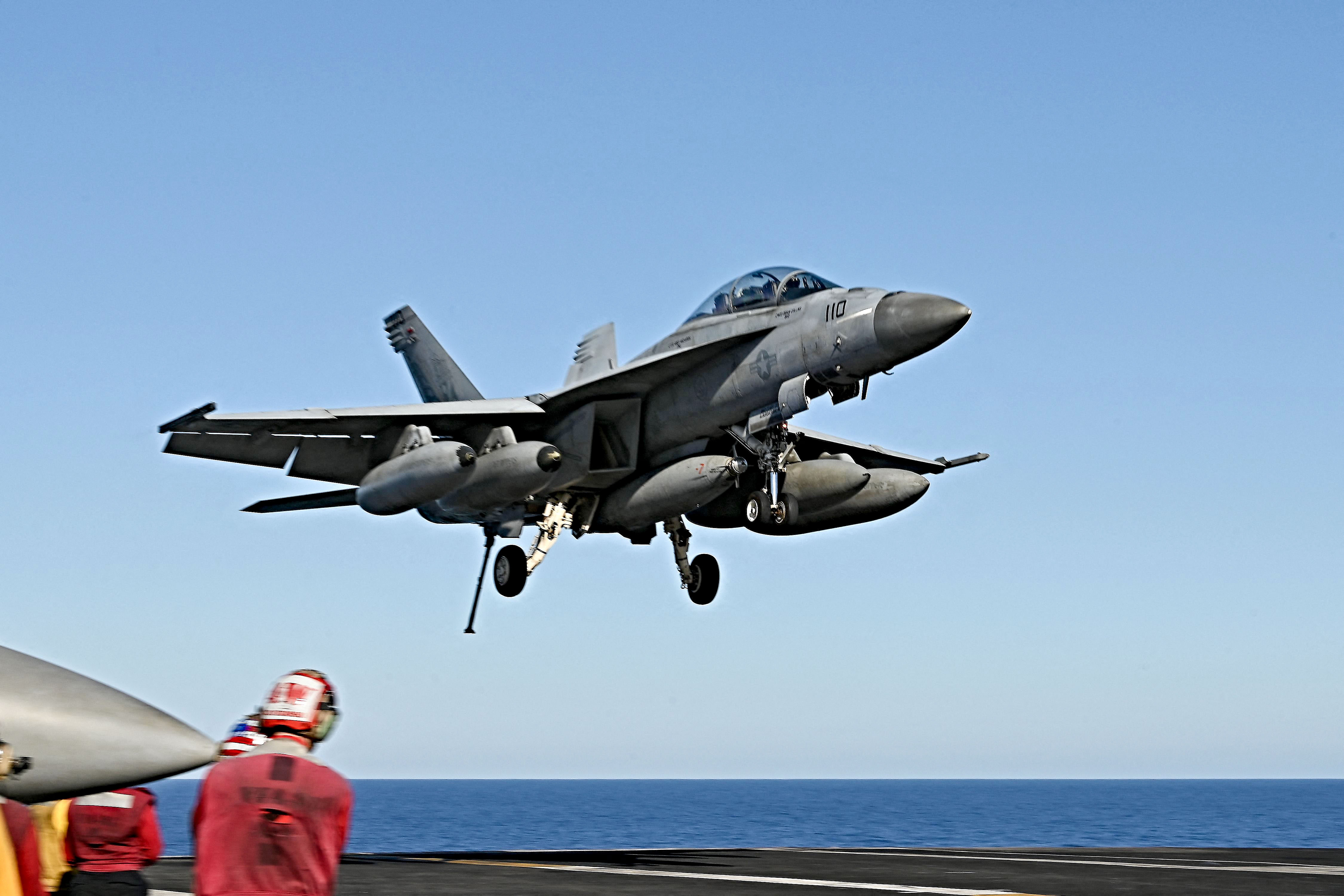The crew of the USS Gettysburg was using a newly upgraded $600 million anti-aircraft system for the first time in live action when they mistakenly targeted two U.S. Navy FA/18 Hornets on Dec. 21 off the coast of Yemen, forcing the crew of one to eject into the Red Sea.
Gettysburg, a 33-year-old Ticonderoga-class guided missile cruiser, arrived in the Red Sea on Dec. 17 as part of the Harry S. Truman aircraft carrier battlegroup after departing Norfolk, Virginia, in September.
On Dec. 21—as Houthis launched drone and missile attacks on military ships and commercial shipping in the Red Sea—the crew engaged its AN/SPY-1B multifunction air defense radar, new AN/SPQ-9B radar, and modified Mk 41 Vertical Launch System installed during a nine-year-long modernization period. The work was completed in June; three months before the cruiser was deployed.
On the night of the “friendly fire” incident, U.S. Central Command said in a statement on X its “forces conducted precision airstrikes against a missile storage facility and a command-and-control facility operated by Iran-backed Houthis within Houthi-controlled territory in Sana'a, Yemen, on Dec. 21 Yemen time.”
“The guided missile cruiser USS Gettysburg (CG 64), which is part of the USS Harry S. Truman Carrier Strike Group, mistakenly fired on and hit the F/A-18, which was flying off the USS Harry S. Truman,” U.S. Central Command said in a Dec. 21 statement.
“Both pilots were safely recovered. Initial assessments indicate that one of the crew members sustained minor injuries,” CentCom concluded. “This incident was not the result of hostile fire, and a full investigation is underway.”
It wasn’t until several days later on Dec. 24 that CentCom confirmed Fox News’ reporting that a second Hornet off the Truman narrowly missed being shot down by a surface-to-air missile mistakenly shot by Gettysburg’s crew.
The source who told Fox News about the second mistaken SAM launch by the same ship said there is anger in the fleet about the training Gettysburg crewmen received in less than three months since being commissioned and questions about the $10 billion Ticonderoga modernization program.
Others pointed to a Government Accountability Office (GAO) assessment that the Ticonderoga class cruisers modernization program was a costly boondoggle and that Gettysburg is not suitable for fleet defense.
There are nine cruisers serving in the Navy. In 2023, the Navy proposed replacing 17 Ticonderoga-class guided missile cruisers with Arleigh Burke-class Flight III destroyers by 2027.
Instead, House Republicans determined that six would be decommissioned and seven modernized. Gettysburg, Chosin, and Cape St. George would be the first three cruisers to have their utility extended through 2030 under the $10 billion plan.
Gettysburg is the first of the three to complete modernization and be deployed.
According to a GAO December 2024 assessment, the Navy spent $3.7 billion on modernizing the first three Ticonderoga cruisers and will “waste” the $1.84 billion already spent on the other four before a decision was made to pull the plug on the modernization program, “divesting” the remaining four ships.
“While it is too late to salvage the cruiser modernization effort, failure to learn critical lessons poses risk to the future of the Navy’s surface fleet as it begins significant modernization efforts for other ship classes,” the report states. “This is particularly true for DDG Modernization 2.0 and the amphibious ship service life extension and modernization.
“While some issues were unique to the cruiser effort, we observed shortfalls that span across the planning and execution of Navy ship maintenance and modernization periods.”














